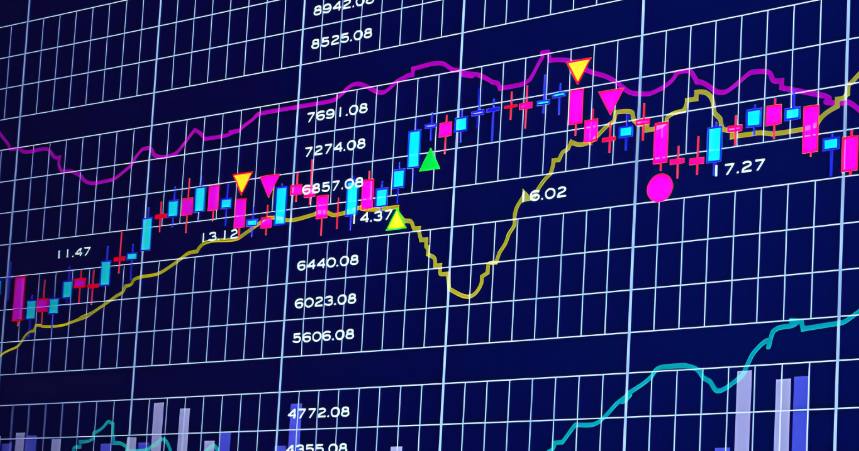Economic Cycles: Key Definitions and Stages
Advertisements
The economic cycle is a fascinating phenomenon that encapsulates the rhythm of growth and contraction experienced by economies around the world.It reflects the inherent patterns of economic activity over time,emphasizing how economies navigate through periods of expansion and recession.This cyclical nature is essential for understanding not just macroeconomic trends but also for shaping individual and institutional investment strategies.The cycle is typically divided into four distinct phases: expansion,peak,contraction,and trough,each embodying unique characteristics and implications for businesses,consumers,and investors alike.
The first phase,expansion,denotes the initial push of economic growth.In this stage,businesses often report increased profits,unemployment rates decline as companies hire more workers,and consumer confidence surges.Key economic indicators,such as Gross Domestic Product (GDP) growth rates and consumer spending,typically reflect positive trends during this time.Historical examples abound to illustrate this vibrant phase.For instance,in the post-2008 financial crisis period,the U.S.economy entered an expansion phase around 2009,fostering substantial recovery and growth in various sectors.Investors generally become more ambitious,focusing on high-risk,high-reward investments such as growth stocks and mutual funds dedicated to emerging markets.
Following the peak,the economy experiences contraction or recession,where growth begins to stall.This period is characterized by declining corporate profits,increasing unemployment,and a decrease in consumer spending.The tumultuous aftermath of events like the 2008 financial crisis highlights the struggles of this phase.Stock prices often fall as investors flee towards safer assets,reflecting the prevailing anxiety in the market.In this environment,investors may shift their focus towards defensive assets,such as government bonds—a traditional haven during economic uncertainty—as they seek to protect their investments from the downward pressure on riskier equities.
The final phase of the economic cycle is the trough,or depression phase.This is marked by a significant slowdown in economic activity and fierce market pessimism,even as prices drop for various assets.While this stage may initially seem bleak—for example,during the Great Depression of the 1930s—investors often uncover opportunities to capitalize on future growth.Historically,financial crises have resulted in substantial government stimulus measures intended to revive an economy.As asset prices plummet,the potential for long-term investment arises; astute investors may find value in what others consider "toxic" assets.The ‘buy low,sell high’ adage resonates strongly in this context.
A significant inquiry into economic cycles is how various factors propel their development.Primarily,the interplay of supply and demand stands as a cornerstone of economic fluctuation.Periods of high demand can lead to supply shortages and economic overheating during the expansion and peak phases.Conversely,during contraction and trough phases,diminished demand often exacerbates economic stagnation and heightens the likelihood of unemployment.
The role of monetary policy cannot be overlooked.Central banks wield considerable influence over economic cycles by adjusting interest rates and regulating money supply.Accommodation through looser monetary policy may foster growth during expansions or stimulate recovery from troughs,while tightening policies can be used to combat inflation during peaks.The delicate balance that central banks strive to maintain is crucial for steering economies through various phases of the cycle.
External shocks,including natural disasters,geopolitical tensions,or swift changes in global markets,can introduce further volatility and prompt shifts in the economic cycle.For instance,the impact of the COVID-19 pandemic serves as a poignant example of an external shock that upended global economies,leading to rapid contractions in most sectors worldwide.Investors must remain vigilant,tracking these potential shocks and assessing their implications for market movements.
For investors,understanding the dynamics of the economic cycle is paramount in developing sound investment strategies.Each phase of the cycle has distinctive characteristics that should inform asset allocation,risk management,and overall investment direction.
In the expansion phase,the focus should lean toward equities,particularly growth stocks and sectors poised for rapid recovery.For example,technology and consumer discretionary stocks frequently thrive during this period,often capturing significant market attention.Diversification also plays a critical role; spreading investments across varied sectors lessens the risk tied to any single market movement.Additionally,as governments maintain accommodative monetary policies,investments in interest-rate-sensitive assets,including real estate,can yield substantial returns.
As the economy peaks,adopting a cautious mindset becomes critical.Given the risks of overinflated assets,investors should consider locking in profits on high-performing stocks and pivoting toward defensive sectors,like utilities or healthcare,which historically demonstrate resilience during downturns.Recognizing potential bubbles and being proactive rather than reactive can safeguard investments.
During a contraction,preserving capital becomes paramount.Moving into fixed-income securities,particularly high-quality bonds and treasury securities,can provide stability amid heightened volatility.Identifying fundamentally sound,undervalued stocks may also present opportunities,especially as investors recognize the eventual recovery that will follow recessionary periods.Monitoring government interventions,such as stimulus packages or changes in fiscal policy,can provide additional insights into forthcoming opportunities.
Finally,in the trough,maintaining a long-term perspective is essential.While markets may appear bleak,this period often presents the best investment opportunities for patient investors willing to endure temporary hardship.Purchasing undervalued positions or sectors set to benefit from the eventual economic recovery requires a calculated approach,embracing the notion that growth often follows recession.
In sum,tailoring investment strategies to align with the economic cycle can yield significant rewards.Adapting asset allocations according to the current economic phase while emphasizing risk management will facilitate navigating market fluctuations.With an emphasis on patience and a long-term outlook,investors can harness the cyclical nature of economies to build wealth strategically.Ultimately,understanding and applying economic cycle dynamics can serve as a foundational stepping stone for prudent investing.